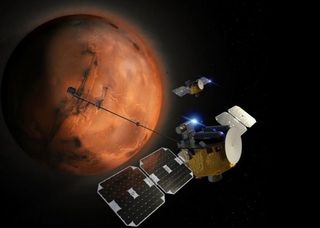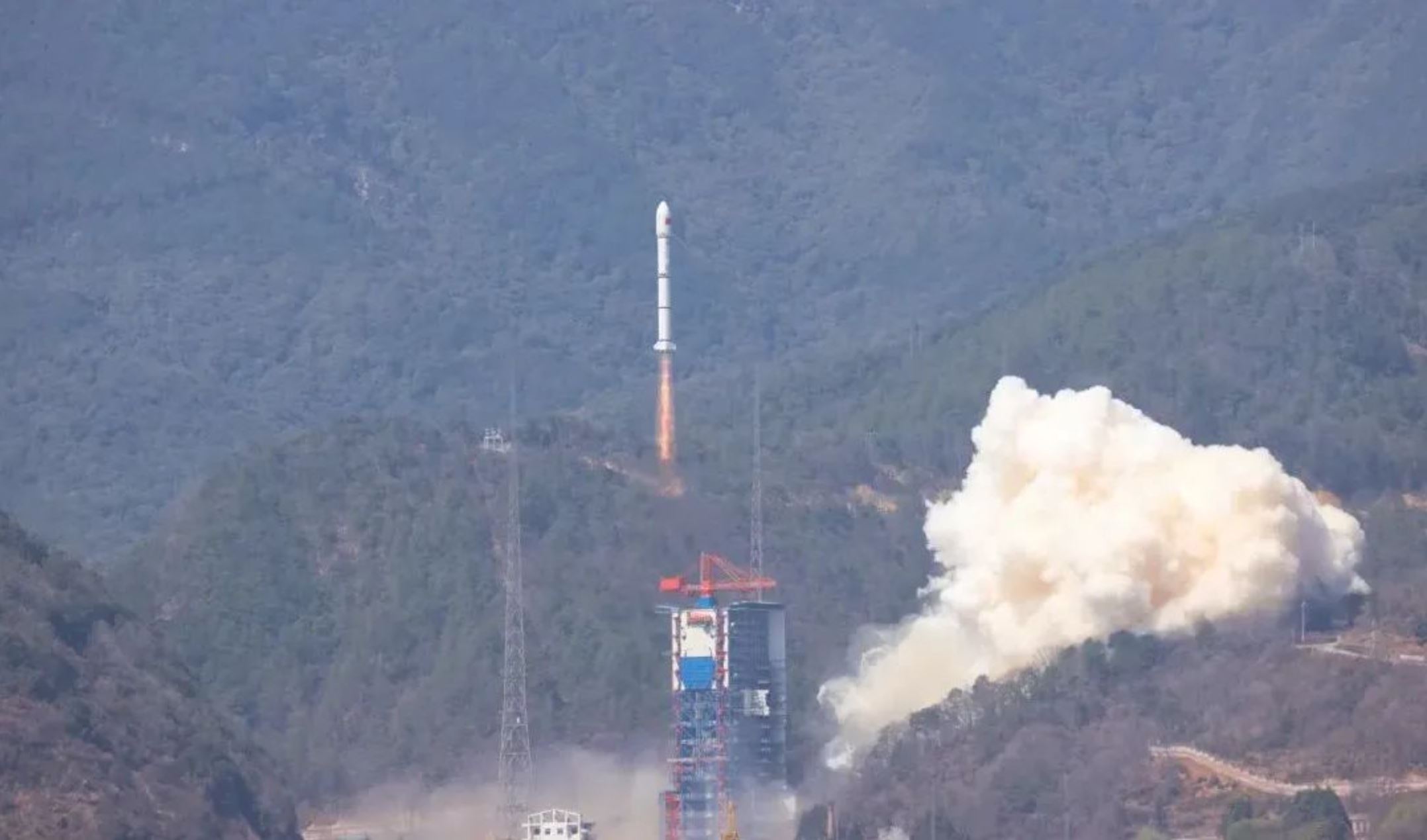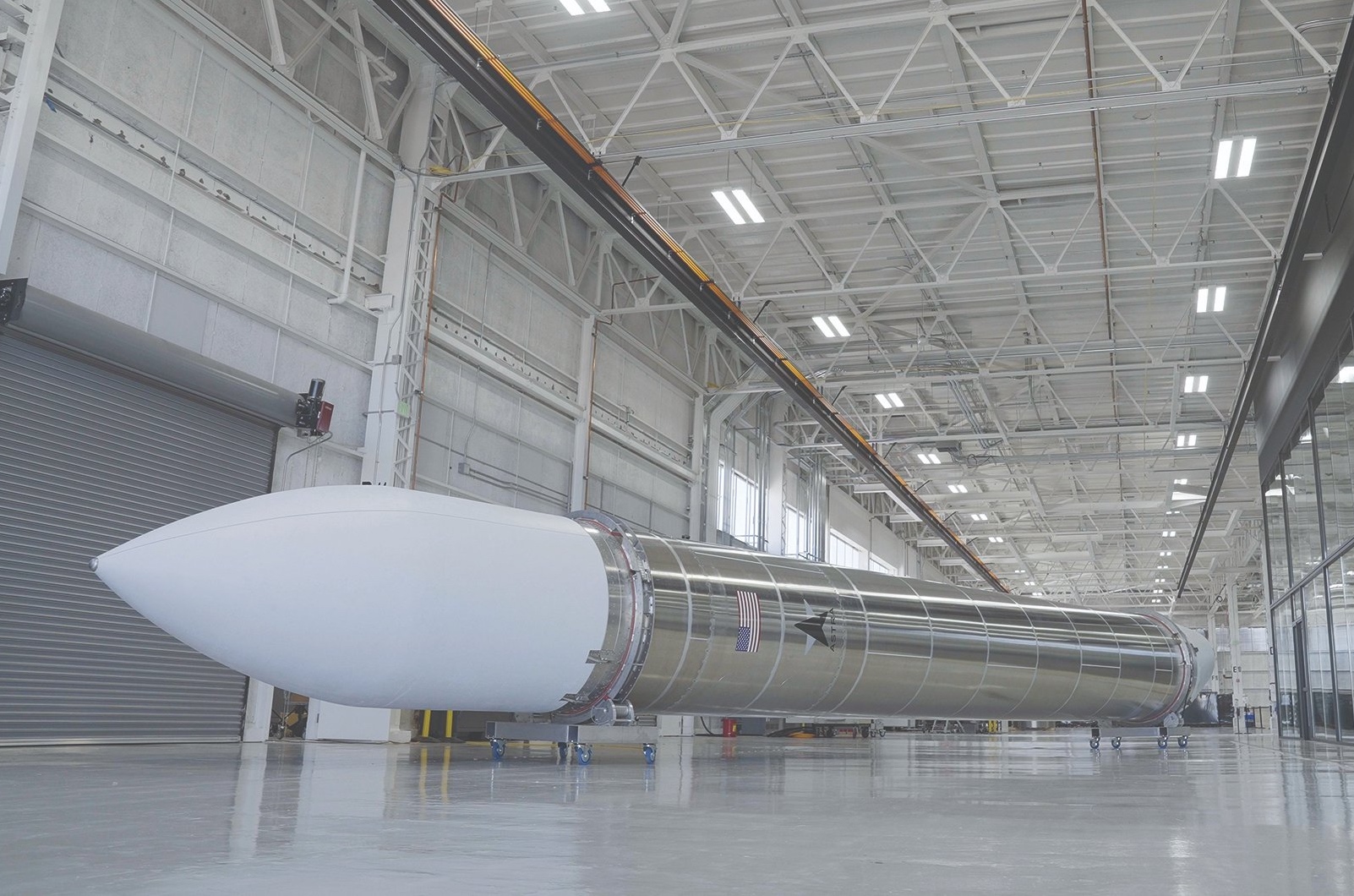
While officials at NASA and the European Space Agency, as well as planners in China, plot out ultra-expensive and complicated missions to return samples from Mars, there are an increasing number of researchers blueprinting low-cost and novel ways to further explore the Red Planet.
Be it via souped-up helicopters or inexpensive landers and orbiters, they say it’s time to script new ways to gather more data from a variety of places on that remote world.
How to use relatively low-priced craft for a next round of investigation is backed by Bethany Ehlmann, a planetary scientist at the California Institute of Technology in Pasadena.
Related: A brief history of Mars missions
“Mars, like Earth, is diverse. Different locales capture different environmental snapshots,” Ehlmann told Space.com. There’s plenty of exploration to do, she added, citing the possibility of visiting amazing and exotic sites that spacecraft have imaged from orbit, such as the Valles Marineris canyon system and the Martian polar caps.
“A system as complicated as Mars requires breadth as well as depth,” Ehlmann said, “and that means finding new ways to explore at multiple locations by lowering the price per spacecraft mission through technology or new programmatic paradigms and collaborations. Imagine half a dozen mobile Mars explorers, operated by universities around the country … That would get students energized about careers in science and engineering!”
After decades of Mars exploration, many of the important questions that remain can be answered only with boots on the ground, be those “boots” robotic or human, Ehlmann said.

‘NewSpace’ approaches
“NASA has always been a very risk-averse agency. This is completely understandable, since taxpayer dollars are being spent,” said Robert Lillis, Associate Director for Planetary Science and Astrobiology within the Space Sciences Laboratory at the University of California, Berkeley.
Lillis points to NASA’s Small Innovative Missions for Planetary Exploration (SIMPLEx) program as a “bold effort” to facilitate first-rate planetary science at a fraction of the cost of a typical Discovery mission. (NASA’s Discovery program supports ambitious but relatively low-cost exploration efforts. The current cost cap for a Discovery mission is about $500 million.)
SIMPLEx also serves as a pathfinder to investigate the trade-off between cost and risk, Lillis said.
For example, the Escape and Plasma Acceleration and Dynamics Explorers (EscaPADE) mission is a SIMPLEx undertaking, one that promises a very good bang for the buck in terms of science per dollar, said Lillis, who’s EscaPADE’s principal investigator. The total cost of this Mars mission, which is projected to arrive in orbit around the Red Planet in 2026, is pegged at under $80 million.
The twin EscaPADE probes will provide a unique “stereo” perspective to Mars’ highly complex upper atmosphere system, Lillis said. “Our two spacecraft — Blue and Gold — will provide us with two pairs of eyes, enabling us to, for the first time, understand the real-time response of Mars’ patterns of atmospheric loss to the electromagnetic gusts and gales of the solar wind that buffet Mars,” he said.
Taking “NewSpace” approaches to spacecraft development will allow constellations of small satellites to explore and monitor the Martian atmosphere with unprecedented fidelity and coverage, Lillis said. “We’ll be able to see all parts of the planet at all times of day, from the surface to the upper atmosphere.”
Lillis added that this kind of “situational awareness” will be crucial to protect future human explorers, in two primary ways. First, better characterization of near-surface air pressure and wind allows for safer entry, descent and landing. Second, weather monitoring will enable accurate weather forecasting through data assimilation.
“When we talk about weather forecasting on Mars being important for the safety of explorers, we’re talking about dust storms, regional or global,” Lillis said. “Dust storms reduce solar power generation and visibility.”
Related: What would it be like to live on Mars?

Dot the distant planet
A new technology to land on Mars cheaply and safely is the Small High Impact Energy Landing Device (SHIELD) concept, now under study at NASA’s Jet Propulsion Laboratory (JPL) in Southern California.
“SHIELD is basically both a lander and a shock absorber in one,” said Louis Giersch, the primary investigator for SHIELD.
“It won’t be able to put a spacecraft like the Perseverance rover on the surface, but it could allow scientists to study more of the Martian surface while riding along with larger NASA missions,” Giersch added. “We’re still evaluating what kinds of science instruments make sense, but weather sensors, cameras and mass spectrometers are all on the drawing board.”
SHIELD’s goal is to reduce Mars lander costs by an order of magnitude, making doable a broad suite of potential missions. For example, the tech could potentially allow NASA to put down dozens of individual robots over a relatively short timespan, dotting the distant planet with landers.
Giersch said that SHIELD will place more limitations on science payloads relative to more conventional Mars landers. The science payloads will need to be even more compact and rugged, he said, but with the anticipated benefit of more frequent access to the Martian surface as a result of reduced mission cost.
Related: The best (and worst) Mars landings of all time

Paradigm shift
“The opportunity for low-cost frequent access to Mars is here,” added JPL’s Nathan Barba, systems engineer for SHIELD. That door was opened when the Mars Cube One (MarCO) A and B cubesats, nicknamed EVE and WALL-E, completed a successful flyby of Mars in November 2018. The duo, which cost just $18.5 million for JPL to build and operate, hitched a ride with NASA’s InSight Mars lander.
“SHIELD could be delivered as a single lander or many in a single launch. A low-cost lander like SHIELD could enable first-time measurements or pathfinder exploration like ground-truthing information that is critical for larger, more-expensive missions,” Barba said.
Increased access to space is exciting, Barba continued, “because it means more opportunities for science at Mars. If a new class of lower-cost interplanetary missions were to come to fruition, it would foster an even more diverse set of investigations and provide an opportunity for many new early-career scientists and engineers.”
Smaller, lower-cost spacecraft missions could provide decadal-class science in parallel to the Mars sample return campaign, Barba said. The paradigm shift in capability and cost can be attributed to many factors, from an order-of-magnitude reduction in launch cost, enabled by rideshare and emerging small launch vehicles, to the fabrication of science instruments capable of high-precision and/or fundamentally novel measurements, he said.
Teachable moments
Yet another future Mars investigation idea has already been bolstered by the multiple flights of NASA’s Ingenuity helicopter. Ingenuity, a technology demonstrator, has clearly showcased its aerial “Wright stuff” — but what comes next?
“Flights of Ingenuity have been beyond what we could have imagined,” said Shannah Withrow-Maser, Mars Science Helicopter Vehicle Systems Lead at NASA’s Ames Research Center in Silicon Valley. “Each flight is teaching us more and more and opening doors for future mission concepts,” she told Space.com.
One idea that’s percolating is an advanced Mars helicopter, a hexacopter device that can haul larger payloads and travel greater distances than the currently flying Ingenuity. Withrow-Maser said this Mars Science Helicopter approach is taking shape courtesy of the teachable moments supplied by Ingenuity data, which is downloaded and evaluated after each flight.
“There’s a little bit of holding your breath every time Ingenuity flies,” Withrow-Maser said. “We’re taking it one flight at a time. It far exceeds the boundaries of what was designed for and tested here on Earth.”

Aerial exploration
Defining a future rotorcraft for Mars is just its own beast, Withrow-Maser said. “We’re able to do some really cool things with rotorcraft,” she said, “taking off from anywhere and also hover over objects of interest.”
Now being appraised is a future mid-air deployment of a hexacopter, which would be released part way through the entry, descent and landing process. Potentially, a variety of Mars features that are tough or impossible for rovers to explore could be surveyed — for example, polar caps, vertical cliffs and mud volcanoes.
The craft could also zip over the intriguing Martian dark streaks known as recurring slope lineae, which might be signs of liquid water activity. A hexacopter could also potentially help map out vertical profiles of the atmosphere or even dive into lava tube openings.
“The community is just starting to get an idea of what might be done using aero-exploration,” Withrow-Maser said. “A rotorcraft allows us to move much further and faster. New vehicle platforms can be a catalyst for all types of science. I think we’re in a good position to be able to take advantage of any opportunities that would come our way.”
Leonard David is author of the book “Moon Rush: The New Space Race,” published by National Geographic in May 2019. A longtime writer for Space.com, David has been reporting on the space industry for more than five decades. Follow us on Twitter @Spacedotcom or Facebook.
Note: This article have been indexed to our site. We do not claim ownership or copyright of any of the content above. To see the article at original source Click Here













